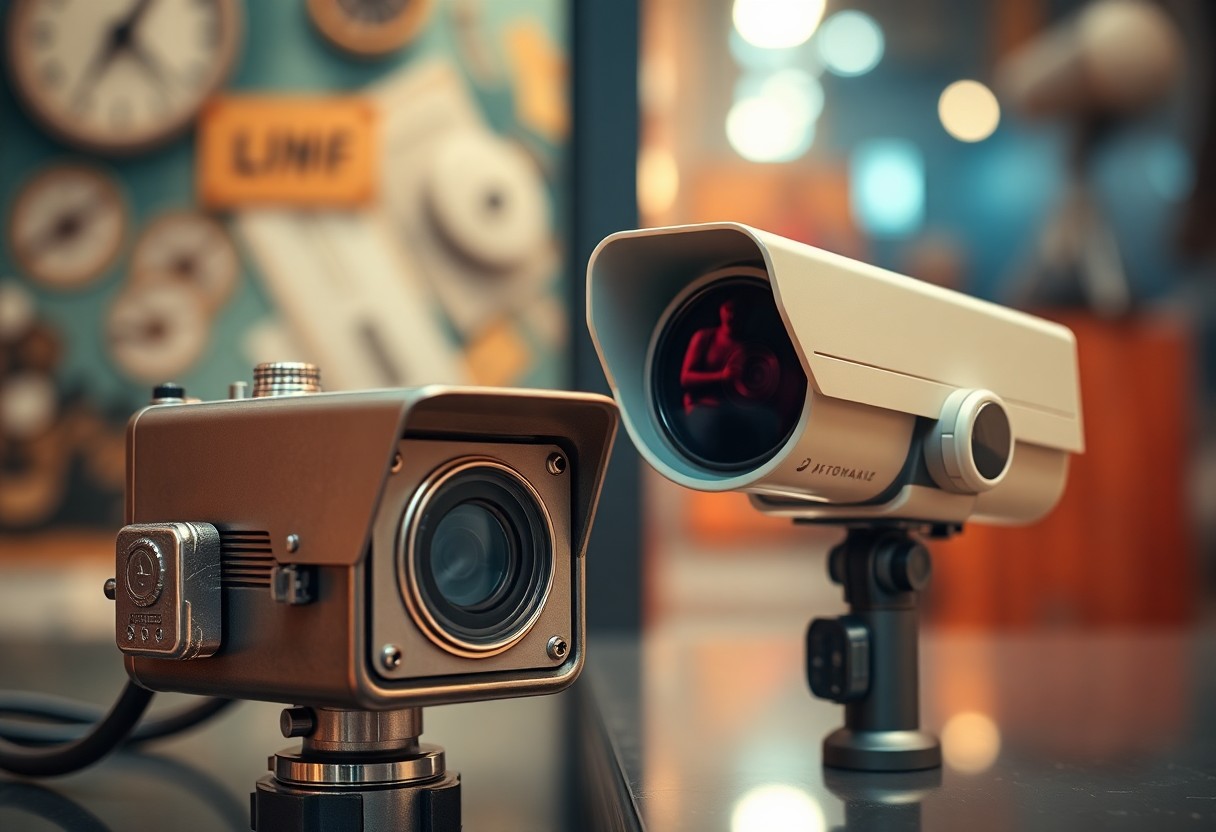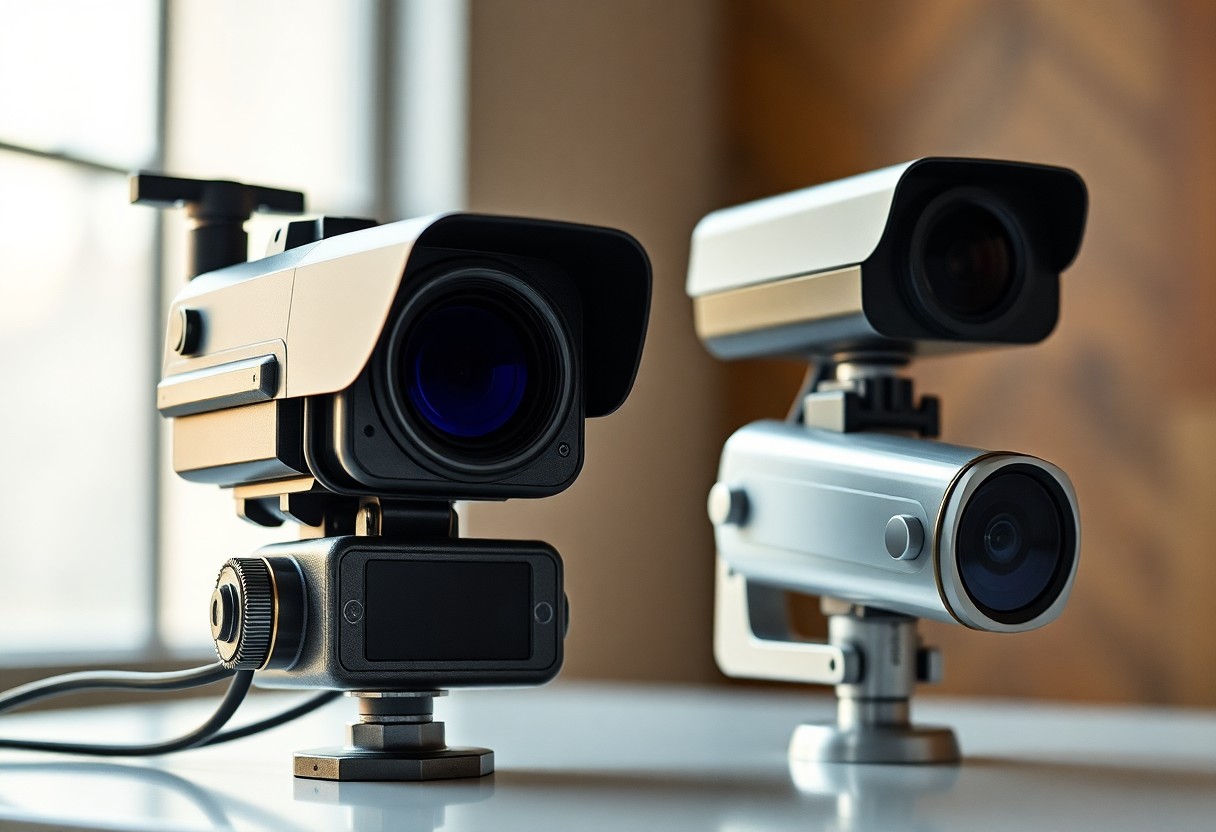Many people overlook the rapid advancements in security camera technology that have transformed how you protect your home or business. From the early days of bulky analog systems to today’s sophisticated smart technologies, your choice in security cameras has never been more important. This post will guide you through the evolution of these systems, highlighting key developments that have enhanced your ability to monitor and secure your environment effectively.
Contents
- The Birth of Analog Security Cameras
- Early Technology and Limitations
- The Rise of CCTV Systems
- The Transition to Digital Surveillance
- Advantages of Digital Over Analog
- Introduction of IP Cameras
- The Era of High Definition
- The Impact of HD Technology
- Increased Accessibility and Affordability
- The Emergence of Smart Security Cameras
- Features of Smart Technology
- Integration with Home Automation
- The Role of Artificial Intelligence in Security Cameras
- Enhancements in Threat Detection
- Advanced Analytics and Data Management
- Current Trends and Future Directions
- Cloud Technology and Storage Solutions
- Privacy Concerns and Regulatory Changes
- Final Words
The Birth of Analog Security Cameras
Before the digital revolution, security cameras were predominantly analog systems, marking the beginning of surveillance technology. The first analog cameras appeared in the mid-20th century, using simple electronic systems to capture images. These cameras played a critical role in enhancing security in public spaces and private properties, laying the groundwork for future advancements in surveillance technology.
Early Technology and Limitations
With the introduction of these early analog cameras, you may encounter some inherent limitations. Their reliance on magnetic tape for recording posed challenges, including the need for frequent maintenance and manual switching of tapes. Additionally, the image quality was often poor, offering little clarity and detail, making it difficult for you to identify subjects in low-light conditions.
The Rise of CCTV Systems
By the 1980s, CCTV systems began to proliferate in various sectors, including retail, banking, and transportation. This shift was driven by the need for enhanced security measures in crime-prone areas, empowering you to monitor activities in real time. CCTV systems provided continuous footage, allowing you to revisit recorded data and improve safety protocols.
Early CCTV systems transformed the landscape of surveillance, giving you more control over security. By connecting multiple cameras to a central monitoring system, you could oversee expanded areas without needing to be physically present. The ability to document incidents bolstered the efficacy of law enforcement agencies, while private businesses found added reassurance in monitoring customer interactions and preventing theft. As a result, the rise of CCTV not only heightened security measures but also established the foundation for advanced digital systems that followed.

The Transition to Digital Surveillance
Clearly, the shift from analog to digital surveillance marked a significant turning point in security technology. Digital cameras offer enhanced image clarity, improved storage options, and more sophisticated features, enabling you to monitor your property more effectively. The transition not only streamlined the use of surveillance systems but also made them more accessible and user-friendly for everyday consumers.
Advantages of Digital Over Analog
Transition to digital technology brings several advantages that enhance your security capabilities. Digital cameras provide higher resolution images, allowing for better detail and recognition. They also offer smart storage solutions such as cloud-based options, making it easier for you to access footage from anywhere. Additionally, digital systems often include features like motion detection, remote monitoring, and integration with other smart home devices, significantly improving security management.
Introduction of IP Cameras
After the rise of digital surveillance, IP cameras emerged as a game-changer in the security industry. These internet protocol cameras utilize networking technology to deliver high-quality video feeds that can be accessed remotely, providing you with greater control and flexibility in monitoring your premises.
Advantages of IP cameras over traditional analog systems are numerous. They offer higher resolutions, which allow for clearer images, and can be easily integrated into existing network infrastructure. With features like remote access via smartphones or computers, you can keep an eye on your property anytime, anywhere. Plus, many IP cameras come with advanced functionalities like video analytics, motion tracking, and advanced encryption, enhancing both your security and peace of mind.
The Era of High Definition
One of the most transformative periods in the evolution of security cameras has been the shift to high-definition (HD) technology. With advancements in image clarity, you can now benefit from enhanced video quality that allows for clearer identification of subjects and improved surveillance capabilities. This era marked a significant leap from traditional analog systems, enabling users to monitor their properties with greater precision and detail.
The Impact of HD Technology
High definition technology has redefined what you can expect from security cameras. The ability to capture sharp, detailed images allows for more effective monitoring and is crucial for evidence collection. This leap in visual fidelity not only improves your peace of mind but also enhances your ability to respond to incidents as they unfold.
Increased Accessibility and Affordability
About a decade ago, HD security cameras were considered a luxury, but this has rapidly changed. With advancements in manufacturing processes and a rise in consumer demand, you can now find high-definition options at budget-friendly prices, making quality surveillance accessible to everyone.
Hence, the increased accessibility and affordability of HD security cameras means you no longer have to compromise on safety due to budget restrictions. Numerous brands now offer a range of HD options that fit various needs and financial capabilities. As a result, you can protect your home or business with the advanced technology that was once out of reach for many, enabling a more secure environment at an affordable cost.
The Emergence of Smart Security Cameras
Unlike traditional analog systems, the emergence of smart security cameras has revolutionized the way you monitor your property. These advanced devices provide real-time footage via your smartphone or computer, enabling you to stay connected from anywhere. With enhanced features like motion detection and cloud storage, you can easily review footage and access your camera feed on demand. For a deeper understanding of this transformation, explore the Evolution of Surveillance Cameras: A Journey from Analog to ….
Features of Smart Technology
By integrating advanced features such as high-definition video quality, night vision, and smart alerts, smart security cameras offer you a comprehensive solution for home security. With these capabilities, you can easily identify potential threats in real-time, ensuring that your property remains safe. Additionally, many smart cameras come equipped with two-way audio, allowing you to communicate directly with visitors or deter intruders effectively.
Integration with Home Automation
Any smart security camera can seamlessly integrate with your existing home automation system, providing you with enhanced control over your security settings. With just a few taps on your smartphone, you can customize alerts, view live feeds, and even control other smart devices within your home.
But the benefits don’t stop there. This integration allows you to automate security responses based on specific triggers, such as locking doors when you leave the house or turning on lights when a camera detects motion. With your security system interconnected, you gain a level of responsiveness and customization that enhances not only your peace of mind but also the overall efficiency of your home security measures.

The Role of Artificial Intelligence in Security Cameras
Now, artificial intelligence (AI) is greatly enhancing the capabilities of security cameras, transforming how you monitor and respond to potential threats. These advanced systems can learn from their environments, adapt to changes, and improve threat detection, ensuring a more effective security solution tailored to your needs.
Enhancements in Threat Detection
Beside increasing the accuracy of alerts, AI technology enables security cameras to differentiate between legitimate threats and harmless activities. This allows you to receive notifications only when necessary, reducing false alarms and ensuring your focus remains on real incidents.
Advanced Analytics and Data Management
Above the basic monitoring functions, AI-driven security cameras provide robust analytics and data management capabilities. They can analyze patterns in the footage, offering insights into potential vulnerabilities and incidents. With this information at your fingertips, you can make informed decisions regarding your security measures.
Key Features of Advanced Analytics and Data Management
|
|
Also, the advanced analytics provided by AI empowers you to assess trends and maintain a safer environment effectively. This analysis not only aids in immediate threat assessment but also helps in predicting and preventing future incidents. Your security strategy becomes proactive rather than reactive.
Benefits of Predictive Analytics in Security Management
|
|
Current Trends and Future Directions
Once again, the security camera industry is advancing rapidly, integrating artificial intelligence and machine learning to enhance surveillance capabilities. These technologies enable real-time facial recognition, behavior analysis, and anomaly detection, allowing you to respond to incidents more effectively. As smart technology continues to evolve, you can expect a greater focus on improved connectivity, user-friendly interfaces, and enhanced features tailored to meet your specific security needs.
Cloud Technology and Storage Solutions
Below, cloud technology is transforming how you manage and access security footage. By storing video data off-site, you gain greater flexibility and scalability, enabling seamless updates and easy retrieval of your recordings from any location. These cloud solutions not only reduce physical storage needs but also provide enhanced data protection and backup options, ensuring that your vital security footage remains accessible and secure.
Privacy Concerns and Regulatory Changes
Current discussions surrounding privacy concerns are reshaping the landscape of security cameras. As smart technology becomes more prevalent, you may find increasing scrutiny regarding how your data is collected, stored, and used. Regulatory bodies are beginning to implement stricter guidelines to address these issues, emphasizing the need for transparency and user consent in monitoring practices.
Understanding the implications of privacy concerns is important for you as a security camera user. With evolving regulations focusing on the protection of personal information, it’s important to stay informed about your rights and the guidelines that govern surveillance technologies. As privacy laws become more stringent, you should actively seek out security solutions that prioritize data protection, ensuring that you’re not only enhancing your safety but also respecting the privacy of individuals within your surveillance reach.
Final Words
From above, you can appreciate how security cameras have transformed from basic analog systems to sophisticated smart technology that enhances your safety and convenience. This evolution not only provides sharper images and greater flexibility but also integrates seamlessly with your home or business environment. As you consider your security needs, understanding this progression enables you to make informed choices that suit your lifestyle, ensuring that your protection strategies remain effective in an ever-changing landscape of security technology.

Leave a Reply